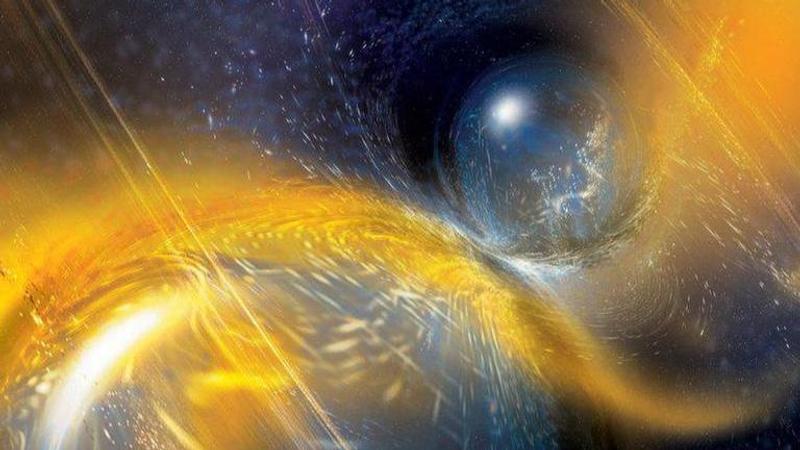Published 16:09 IST, May 20th 2020
Astrophysics theory reveals mystery behind massive neutron star merger in milky way
Earlier this year, astrophysics researchers announced that they had detected a second gravitational wave signal from a collision of two neutron stars.

Advertisement
Earlier this year, scientists announced that they had detected a second gravitational wave signal from a collision of two neutron stars the two merging stars were combined to form one binary object. Astrophysicists from Australia believe they have a theory, ‘unstable case BB mass transfer’, that could explain the phenomenon of the merger and formation of a binary object that is reportedly larger than any other binary neutron star system that has been formed through this process to date.
Over 3 times the mass of the Sun
As per reports, the combined mass of both the neutron stars was 3.4 times the mass of the sun, and while the event was completely unprecedented, a team of astrophysicists believes that they possibly have a theory that could explain the formation of the massive binary star.
GW190425 is very special. The total mass of the two stars is about 3.4 times that of our sun. That’s huge for these astronomical sources!
— Dr. Karan Jani (@AstroKPJ) January 6, 2020
This discovery is a powerful testimony of the invisible universe we are discovering with gravitational-wave astronomy. pic.twitter.com/I1i56MU18W
As per reports, Isobel Romero Shaw from Monash University led a team from Australia’s ARC Center of Excellence for Gravitational Wave Discovery (OzGrav) and proposed the theory. They believe that their theory can explain how two celestial objects with the mass of over three times that of our sun could have combined and it would also explain both the high mass of the binary object and why similar systems aren’t observed using traditional radio astronomy techniques.
GW190425: the merger of a compact binary with total mass of about 3.4 Msun https://t.co/nt4D3Wy3OS pic.twitter.com/sVJXKBbUxT
— EGO-Virgo (@ego_virgo) January 7, 2020
On the origin of GW190425: the progenitor of GW190425 could be a binary consisting of a neutron star and a helium star. It provides no evidence for or against the unstable mass transfer scenario. https://t.co/dLgOP2idlv pic.twitter.com/CwTPsO74w2
— Francis Villatoro (@emulenews) January 22, 2020
According to reports, the merger of the two stars is being called GW190425. Shaw explains that the process of an ‘unstable case BB mass transfer’ first requires a neutron star, which has a stellar partner. By this, he means a helium (He) star with a carbon-oxygen (CO) core. Once the helium cloud has expanded to engulf the neutron star, the stellar partner is then brought closer by the helium cloud. After the helium cloud dissipates, the two objects merge to form a binary object.
(Image Credit Twitter/@AstroKPJ)
16:09 IST, May 20th 2020



